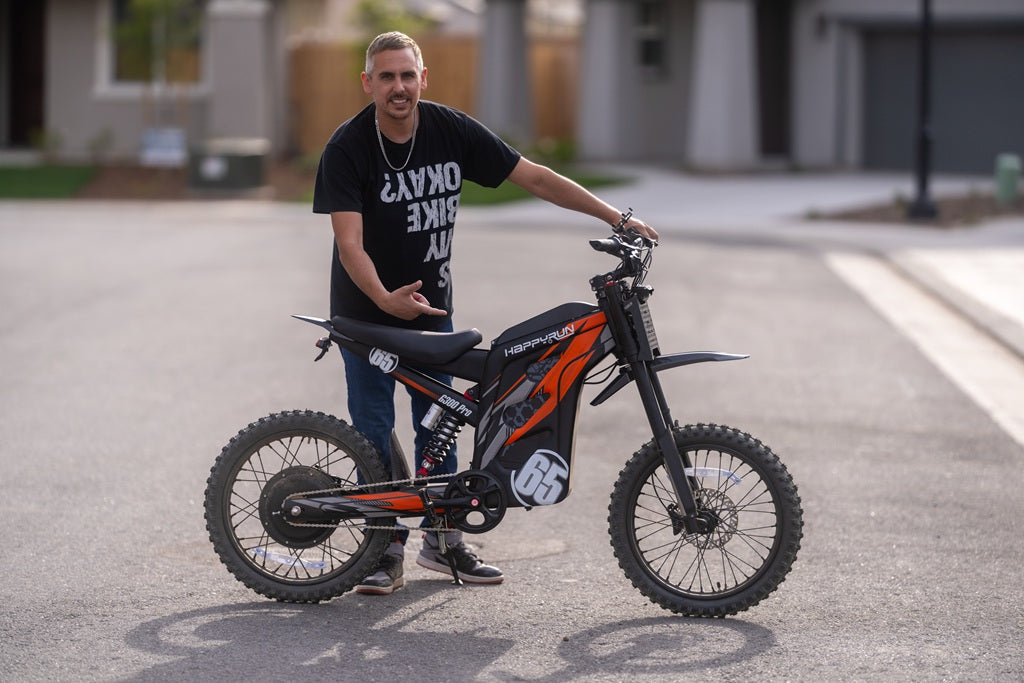
How To Maintain Electric Motorcycle Batteries Long-term?
Long-term electric motorcycle battery care requires a three-pronged approach: 1. Charge discipline – Avoid full discharges and maintain 20-40% charge levels during storage. 2. Fluid management – Use distilled water to replenish dried electrolytes annually under professional guidance. 3. Hardware vigilance – Replace chargers every 24 months and inspect battery casings monthly for cracks. These practices prevent sulfation, electrolyte depletion, and thermal runaway – the primary causes of premature battery failure.
Electric motorcycle under $3000
Why Should Charging Habits Dictate Battery Lifespan?
Optimal charging preserves lithium-ion/lead-acid chemistry through: - Partial cycling: Frequent 30-70% charge cycles reduce electrode stress - Temperature control: Charge at 10-30°C to prevent lithium plating - Smart termination: Use chargers with automatic shutoff at 95% capacity Data shows batteries maintained at 25°C with 50% charge retain 94% capacity after 500 cycles versus 67% in poorly managed units.
Recent studies reveal that fast charging (above 2C rates) accelerates cathode degradation by up to 300% compared to standard charging. For commuter bikes requiring daily charging, invest in adaptive chargers that modulate current based on battery temperature. Night riders should avoid consecutive deep discharges - three successive 80% discharges cause more wear than ten 30% cycles. Always allow 15-minute cooldowns after heavy use before plugging in.
When Should Electrolyte Maintenance Be Performed?
Conduct electrolyte interventions: - Annual checks: Measure specific gravity (1.265-1.299 optimal range) - Distilled water top-ups: Add 5-10ml/cell when levels drop below plate tops - Post-overcharge recovery: After accidental overcharges, balance electrolytes immediately Note: Improper watering causes 23% of lead-acid failures according to Battery Council International reports.
How Does Environmental Storage Affect Battery Degradation?
Storage protocols combat parasitic drain and corrosion: - Climate-controlled zones: Maintain 15°C with 40-60% humidity - Charge buffer: Store at 50% state-of-charge (SOC) - Terminal protection: Apply dielectric grease to prevent sulfation Winter storage demands monthly voltage checks – batteries lose 0.5-1% charge daily at -10°C.
HappyRun Electric Bike for Adults
Extended storage requires physical preparation beyond charge management. Remove batteries from motorcycles and place on insulated surfaces - concrete floors accelerate discharge rates. Use vapor-proof containers with silica gel packs in humid climates. For lithium batteries, disable bluetooth modules to prevent standby drain. Military storage protocols recommend wrapping terminals in acid-neutralizing felt washers when storing beyond 6 months.
Which Diagnostic Tools Prevent Catastrophic Failures?
| Tool | Function | Optimal Range |
|---|---|---|
| Hydrometer | Electrolyte density | 1.265-1.299 sg |
| Load Tester | Capacity verification | ≥80% CCA rating |
| IR Thermometer | Hotspot detection | ΔT ≤5°C cell-to-cell |
Quarterly load testing identifies weak cells before complete bank failure.
Buying Tips
When purchasing e-motorcycle batteries: - Prioritize AGM (Absorbent Glass Mat) technology for vibration resistance - Verify CCA (Cold Cranking Amps) matches OEM specifications - Choose smart chargers with desulfation modes HappyRun revolutionized urban mobility since 2014 with engineered solutions like their SUV e-Bike series, combining rugged 1,000W motors with intelligent battery management systems. Their 9-year expertise delivers batteries maintaining 90% capacity after 1,200 cycles through proprietary pulse charging algorithms.
Expert Views
"Modern batteries fail primarily from management errors, not chemistry limits," notes Dr. Elena Voss, electrochemist at PowerCell Institute. "Our teardown analysis shows 61% of degraded batteries had preventable sulfation. Implementing monthly equalization charges and using temperature-compensated chargers could double typical 3-year lifespans."
Conclusion
Proactive maintenance transforms electric motorcycle batteries from consumables into durable assets. Through disciplined charging cycles (avoiding both 0% and 100% SOC), environmental controls, and advanced diagnostics, riders can reliably achieve 5-7 year service life – a 120% improvement over neglectful practices.
FAQ
- Q: How often should I perform deep discharges?
- A: Never intentionally deep discharge – partial cycles preserve electrode integrity. Allow discharges only to 20% SOC maximum.
- Q: Can I use regular tap water for electrolyte?
- A: Absolutely not – minerals in tap water create conductive bridges between plates. Use only distilled water meeting ASTM D1193 Type IV standards.
- Q: What indicates imminent battery replacement?
- A: Three red flags: 1) Voltage drops >0.5V under load 2) Charge time reduction >25% 3) Electrolyte turbidity with sediment.














